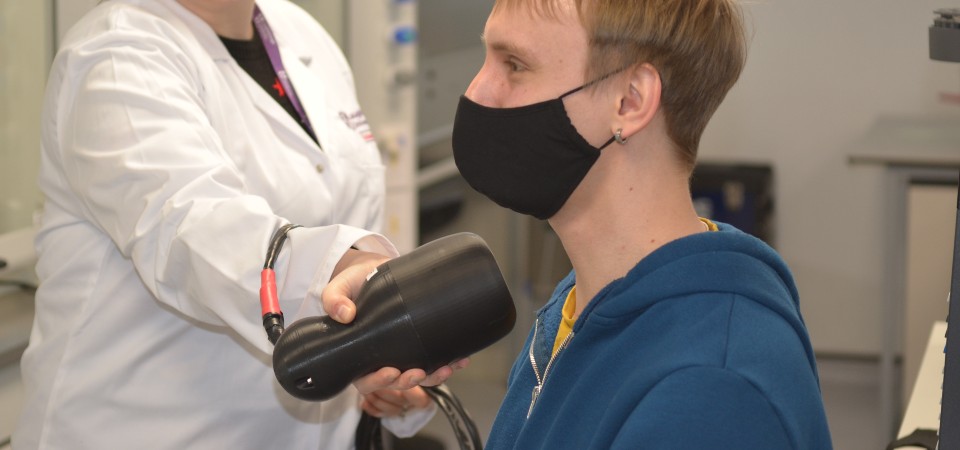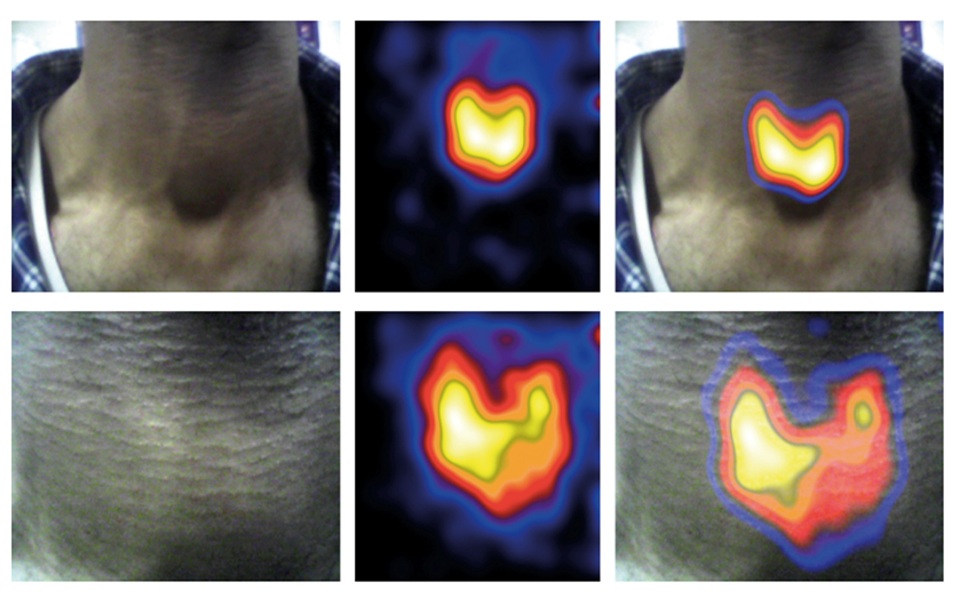Believe it or not, these three things all have something in common - they’re connected to research by Dr Sarah Bugby, an expert in medical physics.
In the latest episode of the Cuppa with a Scientist podcast, Dr Bugby discusses her academic journey to where she is today, ongoing research, and an idea involving artificial skin that led to a peculiar meeting, to name but a few topics.
With host Meg Cox, Dr Bugby also discusses one of her proudest achievements: the Hybrid Gamma Camera (HGC), which could be hitting the market in as little as 18 months.
This portable imaging device, which is the result of a project now led by Dr Bugby, has the potential to improve the treatment and diagnosis of cancer.
Gamma cameras are the most used imaging device in nuclear medicine (the branch of medicine that deals with the use of radioactive substances in research, diagnosis, and treatment).
Patients are injected with a radioactive substance, which emits gamma rays that can be detected outside the body by a gamma camera.
Clinicians can choose from a wide array of these radiopharmaceuticals and so target particular areas or functions in the body including certain tumours.
The technique is highly celebrated, but there are limitations to the current tools used in health settings.
“If you were to go into a hospital and look at a standard clinical gamma camera, it takes up a whole room, with each imaging panel (or camera head) about 75cm wide.
“A patient has to come to the medical physics department, lie on the bed, and stay in the same position during the scan, which can take half an hour or so to get an image of the full patient”, Dr Bugby explained in her Cuppa with a Scientist interview.
“What I’m interested in is not replacing these machines but building smaller gamma cameras that can be brought closer to the patient and are a bit more flexible.
“These could be used in situations where you don't want to look at the whole patient, for example, you may just want to look at the thyroid.
“The camera can come right up to the patient and the patient doesn't have to be lying down, they could be sitting up or they could stay in their hospital bed.”
The HGC device developed by Dr Bugby and team, pictured below, is about the size of a hairdryer and can easily be carried to wherever it is needed.

She said: “It could have applications in radio-guided surgery – where a surgeon is looking for a source of radioactivity within the body for example during cancer treatment and diagnosis – and may also find use in other areas, such as in the nuclear industry.”
The HGC, which Dr Bugby explains in the podcast has taken her to the likes of Uruguay, has been licensed by Serac Imaging Systems and is currently undergoing testing and refining.
Since recording the podcast, Dr Bugby has tested the refined version of the device – titled ‘the Seracam’ – in her lab at Loughborough.
Dr Bugby said: “Their device is going through lots of different processes so that it can actually be sold and go into hospitals. That's going to be fabulous and it’s really exciting.
“The Seracam is a huge leap forward technologically that’s really going to make a difference to patients.
“In the case for some patients, it might make the difference between clinicians knowing that the cancer has spread and not knowing that the cancer has spread, which obviously makes a big impact to those individuals lives. It could be you a life-saving technology."
To watch the full podcast episode, click the below YouTube video:
Or if you prefer to listen to your podcasts, you can do so here:
For more on Dr Bugby’s HGC research and access to a paper that explains the techniques it combines, a press release can be found here.
Dr Bugby's Research and Impact profile can also be found here.
‘Cuppa with a Scientist’ is a podcast series launched by the Loughborough University PR team that aims to inspire the next generation of scientists and dispel the myth that all scientists wear white lab coats. Read more about it here.

